[caption id="attachment_169547" align="alignnone" width="789"]

Middle School Football University All-American Bowl 2009. Future Cat Killer Kyle Bolin is #19[/caption]
It was a heady loss for football phenom Connor Rogers.
A standout quarterback from Franklin-Simpson on the bluegrass side of the Tennessee border, Rogers was selected to lead the
Kentucky West All-Star team this past weekend at Kentucky State University. Rogers' arm was precise and his footwork impeccable, but each time his team approached the red zone, the opportunity slipped away: his fullback fumbled; a pass was picked off by an enterprising safety; he was sacked on fourth down just a few yards from the goal line. In the end, after a valiant effort, Rogers' squad lost 13-0.
The good news, however, is that the 5 foot, 7 inch quarterback will have plenty of more opportunities to prove himself to college scouts, especially those from the University of Oregon, from whom he covets a scholarship offer.
You see, last weekend's matchup was the Kentucky
Middle School Football Association's
7th Grade East-West All-Star Game. And Connor Rogers is only 12 years old.
===
I'm sad to pass on media reports that the American sport known as "football" (AKA "pigskin" or "gridiron") died in 2014 at the ripe old age of 145.
The time of death is uncertain. Football's demise may have come in January at the hands of President Barack Obama when
he declared that he would not allow his hypothetical son play the sport; or perhaps later in November when hoops legend LeBron James
announced that his real, flesh-and-blood sons were banned from the gridiron.
Pigskin may have died in September when NFL'er Ray Rice
was exposed on videotape brutally punching his then-fiancée in a hotel elevator, fellow All Pro running back Adrian Peterson
was charged with beating his son with a switch, and NFL Commissioner Roger Goodell muddled through a disastrous
press conference trying, and failing, to demonstrate the league's commitment to preventing such off-the-field violence of its players.
It's also possible that football's clock may have expired in November of this year, upon publication of a
New York Times magazine piece that chronicled the war on the sport being waged by trial attorneys seeking multi-billion dollar damage claims due to long-term damage caused by the sport's inherent violence, and concluding -- in a dramatic cover story headline -- that football is "the next tobacco."
The late sport of football is survived by rugby, boxing, NASCAR, UFC, ice hockey, bull riding, and a dozen other contests in which athletes run the risk of serious injury and/or death. In lieu of flowers, please send donations to the
Muhammad Ali Capitol Rotunda Fund.
===
As
Mark Twain might have said, the reports of football's impending demise have been greatly exaggerated.
The sport is simply too big -- and too popular -- to fail. Of the top ten rated television programs in 2013, nine were NFL games. The Super Bowl exceeded 108 million viewers, many of whom were not exclusively watching the commercials. And despite all of the recent bad press and celebrity protestations, ratings this year are up for both the pros and college, fantasy football continues to mushroom, the new Division I College Football playoff has generated popular excitement and media-generating buzz, there's been an
explosion of D-III football participation; and get this: The NFL will bring in a record $9 billion-plus in revenue in 2014.
Like it or not -- and admittedly, there's a whole lot to dislike -- our culture, as with every recorded culture before us, embraces competition that involves men beating the stuffing out of each other, from the Colosseum in Rome to the Colosseum in Los Angeles. Violence is in our DNA, and football has perfected the mix of thrilling, fast-paced, acrobatic mastery with brutal, primal bloodshed. With high-definition cameras swinging right on top of the action and über-sensitive microphones providing clear vibrations of every snap, crackle and pop, the sensory rampage is simply too addictive to avoid.
We're also a compassionate nation. Stories of our heroes suffering with debilitating injury and illness in retirement -- some taking their own lives to alleviate the pain -- have generated broad public support for financial reparations to provide for a higher quality of life into their old age. Already a class action filed by retired pros resulted in a $1 billion settlement.
But with all due respect to The Source of All the News that's Fit to Print, the
New York Times' prediction that player lawsuits will result in football going the way of tobacco, is...well...up in smoke.
Unlike early smokers who were enticed by false medical claims about cigarettes, there's no footballer who ever entered the arena without some knowledge of the severe risks. While lawsuits brought by enfeebled players demonstrated some evidence of the NFL slow-walking early studies on the long-term impact of concussion damage, the league's behavior does not even approach the mendacity of tobacco executives who hid decades of irrefutable scientific research on their product's deadly effect. Most significantly, while billions of humans have inhaled tobacco smoke in their lungs -- whether directly or secondhand -- there is a very small and finite number of the world's athletes who've played the sport long enough to ever serve as a class action plaintiff.
Of course, give the
Gray Lady some credit: The magazine piece compellingly outlines the growing and daunting evidence of long-term physical damage that is being suffered by legions of football players. And while this problem will never kill the sport itself, media exposure of these new developments do have a pernicious effect. If richer families continue to hold back their sons from the sport, we might see football vividly symbolize the country's growing economic inequality and racial divide -- with poorer, mostly African American kids on the field, being cheered on by the wealthier, paler kids in the stands. And that leads to the severely troubling specter of the poor mercenary gladiator risking his life for the entertainment of the cozy and comfortable elite, here in the wealthiest culture in the history of the world.
===
The cure for the game, however, might be found in the purest form of the sport. And pigskin's future just might be witnessed on the fields of the Kentucky Middle School Football Association.
Founded in 2007, the association was created by concerned parents who witnessed a Wild West system of youth football contests -- inconsistent, sometimes incoherent safety rules, with frightening tales of 16 year olds suiting up and pounding their much smaller 12 year old opponents. Its President, Greg Mitchell, volunteers his time and energy (putting his annual compensation approximately $44 million less that Roger Goodell's), and with his expert counsel -- he's a successful insurance attorney who practices in the office next to me at Frost Brown Todd -- the association established strict and demanding health guidelines, provides mandatory safety training for coaches and families, requires intensive instruction for players on injury-avoidance techniques, and maintains detailed statistical information on injuries to protect individual students as well as to provide research for addressing potential health risks.
In the six years of gridiron competition, thousands of kids have participated; and many have excelled as they advanced, including University of Louisville freshman quarterback (and
Wildcat killer) Kyle Bolin, top national offensive lineman prospect
Drake Jackson, and prized UK signee
Zy'Aire Hughes. Today, more than 160 schools participate, in every region of the state.
Among the parents, it's hard to find an Obama- or Lebron-like skeptic. West All Star Connor Rogers' mother, Angie, says football has been an "incredible" experience for the 12-year-old QB: "He's learned leadership, a lot about discipline, and he's grown up and matured a whole lot" through the sport. Sheridan Wright, who's an assistant coach at Wayne County Middle School and has watched three sons come through the program, explains that they've learned invaluable lessons about "unselfishness, teamwork, setting goals, achieving goals, being able to take orders...lessons that will help them in every area, all of their lives."
Ask parents about the fear of injury, and you usually receive responses like those of Kelly Smith, whose son Joshua plays for Bluegrass Middle in Elizabethtown. Smith watched her son suffer severe knee damage from wrestling, and his friends incur debilitating injuries from basketball. But with football, she argues that all of the new sensitivities have made the sport safer than ever: "Concussion testing is immediate; kids are replaced with no hesitation if they show any signs...We refurbish helmets every year and take hydration issues and water breaks very seriously...Our coaches follow the rules to the extreme."
In terms of its impact on community and society, League President Greg Mitchell is bullish: "You see these kids from different parts of the state...from the inner part of Jefferson County to the most rural parts of Bell County...All stereotypes disappear, and they make lifelong friendships." More significantly, Mitchell attests that middle school football provides hope for some of these boys that might never have existed in a basketball-focused state: "We really try hard to prepare these boys for college scholarship opportunities...We run a mock combine and show how they are used for recruiting...We instill in them how coaches and recruiters are also looking for what they do off the field -- in the classroom, being a person of character...We are catching them when it really matters, before they make the kind of dumb, youthful mistakes that might turn off a college or a coach."
Ignore the Chicken Littles: Football isn't in imminent danger of implosion. But the sport's soul could use a little salvation.
NFL and college chieftains: Tale a look at what's happening with your youngest future stars. With them as a model, the sport just might attain a level of respect that in today's cynical, violent world might otherwise be unimaginable.
 Middle School Football University All-American Bowl 2009. Future Cat Killer Kyle Bolin is #19[/caption]
It was a heady loss for football phenom Connor Rogers.
A standout quarterback from Franklin-Simpson on the bluegrass side of the Tennessee border, Rogers was selected to lead the Kentucky West All-Star team this past weekend at Kentucky State University. Rogers' arm was precise and his footwork impeccable, but each time his team approached the red zone, the opportunity slipped away: his fullback fumbled; a pass was picked off by an enterprising safety; he was sacked on fourth down just a few yards from the goal line. In the end, after a valiant effort, Rogers' squad lost 13-0.
The good news, however, is that the 5 foot, 7 inch quarterback will have plenty of more opportunities to prove himself to college scouts, especially those from the University of Oregon, from whom he covets a scholarship offer.
You see, last weekend's matchup was the Kentucky Middle School Football Association's 7th Grade East-West All-Star Game. And Connor Rogers is only 12 years old.
===
I'm sad to pass on media reports that the American sport known as "football" (AKA "pigskin" or "gridiron") died in 2014 at the ripe old age of 145.
The time of death is uncertain. Football's demise may have come in January at the hands of President Barack Obama when he declared that he would not allow his hypothetical son play the sport; or perhaps later in November when hoops legend LeBron James announced that his real, flesh-and-blood sons were banned from the gridiron.
Pigskin may have died in September when NFL'er Ray Rice was exposed on videotape brutally punching his then-fiancée in a hotel elevator, fellow All Pro running back Adrian Peterson was charged with beating his son with a switch, and NFL Commissioner Roger Goodell muddled through a disastrous press conference trying, and failing, to demonstrate the league's commitment to preventing such off-the-field violence of its players.
It's also possible that football's clock may have expired in November of this year, upon publication of a New York Times magazine piece that chronicled the war on the sport being waged by trial attorneys seeking multi-billion dollar damage claims due to long-term damage caused by the sport's inherent violence, and concluding -- in a dramatic cover story headline -- that football is "the next tobacco."
The late sport of football is survived by rugby, boxing, NASCAR, UFC, ice hockey, bull riding, and a dozen other contests in which athletes run the risk of serious injury and/or death. In lieu of flowers, please send donations to the Muhammad Ali Capitol Rotunda Fund.
===
As Mark Twain might have said, the reports of football's impending demise have been greatly exaggerated.
The sport is simply too big -- and too popular -- to fail. Of the top ten rated television programs in 2013, nine were NFL games. The Super Bowl exceeded 108 million viewers, many of whom were not exclusively watching the commercials. And despite all of the recent bad press and celebrity protestations, ratings this year are up for both the pros and college, fantasy football continues to mushroom, the new Division I College Football playoff has generated popular excitement and media-generating buzz, there's been an explosion of D-III football participation; and get this: The NFL will bring in a record $9 billion-plus in revenue in 2014.
Like it or not -- and admittedly, there's a whole lot to dislike -- our culture, as with every recorded culture before us, embraces competition that involves men beating the stuffing out of each other, from the Colosseum in Rome to the Colosseum in Los Angeles. Violence is in our DNA, and football has perfected the mix of thrilling, fast-paced, acrobatic mastery with brutal, primal bloodshed. With high-definition cameras swinging right on top of the action and über-sensitive microphones providing clear vibrations of every snap, crackle and pop, the sensory rampage is simply too addictive to avoid.
We're also a compassionate nation. Stories of our heroes suffering with debilitating injury and illness in retirement -- some taking their own lives to alleviate the pain -- have generated broad public support for financial reparations to provide for a higher quality of life into their old age. Already a class action filed by retired pros resulted in a $1 billion settlement.
But with all due respect to The Source of All the News that's Fit to Print, the New York Times' prediction that player lawsuits will result in football going the way of tobacco, is...well...up in smoke.
Unlike early smokers who were enticed by false medical claims about cigarettes, there's no footballer who ever entered the arena without some knowledge of the severe risks. While lawsuits brought by enfeebled players demonstrated some evidence of the NFL slow-walking early studies on the long-term impact of concussion damage, the league's behavior does not even approach the mendacity of tobacco executives who hid decades of irrefutable scientific research on their product's deadly effect. Most significantly, while billions of humans have inhaled tobacco smoke in their lungs -- whether directly or secondhand -- there is a very small and finite number of the world's athletes who've played the sport long enough to ever serve as a class action plaintiff.
Of course, give the Gray Lady some credit: The magazine piece compellingly outlines the growing and daunting evidence of long-term physical damage that is being suffered by legions of football players. And while this problem will never kill the sport itself, media exposure of these new developments do have a pernicious effect. If richer families continue to hold back their sons from the sport, we might see football vividly symbolize the country's growing economic inequality and racial divide -- with poorer, mostly African American kids on the field, being cheered on by the wealthier, paler kids in the stands. And that leads to the severely troubling specter of the poor mercenary gladiator risking his life for the entertainment of the cozy and comfortable elite, here in the wealthiest culture in the history of the world.
===
The cure for the game, however, might be found in the purest form of the sport. And pigskin's future just might be witnessed on the fields of the Kentucky Middle School Football Association.
Founded in 2007, the association was created by concerned parents who witnessed a Wild West system of youth football contests -- inconsistent, sometimes incoherent safety rules, with frightening tales of 16 year olds suiting up and pounding their much smaller 12 year old opponents. Its President, Greg Mitchell, volunteers his time and energy (putting his annual compensation approximately $44 million less that Roger Goodell's), and with his expert counsel -- he's a successful insurance attorney who practices in the office next to me at Frost Brown Todd -- the association established strict and demanding health guidelines, provides mandatory safety training for coaches and families, requires intensive instruction for players on injury-avoidance techniques, and maintains detailed statistical information on injuries to protect individual students as well as to provide research for addressing potential health risks.
In the six years of gridiron competition, thousands of kids have participated; and many have excelled as they advanced, including University of Louisville freshman quarterback (and Wildcat killer) Kyle Bolin, top national offensive lineman prospect Drake Jackson, and prized UK signee Zy'Aire Hughes. Today, more than 160 schools participate, in every region of the state.
Among the parents, it's hard to find an Obama- or Lebron-like skeptic. West All Star Connor Rogers' mother, Angie, says football has been an "incredible" experience for the 12-year-old QB: "He's learned leadership, a lot about discipline, and he's grown up and matured a whole lot" through the sport. Sheridan Wright, who's an assistant coach at Wayne County Middle School and has watched three sons come through the program, explains that they've learned invaluable lessons about "unselfishness, teamwork, setting goals, achieving goals, being able to take orders...lessons that will help them in every area, all of their lives."
Ask parents about the fear of injury, and you usually receive responses like those of Kelly Smith, whose son Joshua plays for Bluegrass Middle in Elizabethtown. Smith watched her son suffer severe knee damage from wrestling, and his friends incur debilitating injuries from basketball. But with football, she argues that all of the new sensitivities have made the sport safer than ever: "Concussion testing is immediate; kids are replaced with no hesitation if they show any signs...We refurbish helmets every year and take hydration issues and water breaks very seriously...Our coaches follow the rules to the extreme."
In terms of its impact on community and society, League President Greg Mitchell is bullish: "You see these kids from different parts of the state...from the inner part of Jefferson County to the most rural parts of Bell County...All stereotypes disappear, and they make lifelong friendships." More significantly, Mitchell attests that middle school football provides hope for some of these boys that might never have existed in a basketball-focused state: "We really try hard to prepare these boys for college scholarship opportunities...We run a mock combine and show how they are used for recruiting...We instill in them how coaches and recruiters are also looking for what they do off the field -- in the classroom, being a person of character...We are catching them when it really matters, before they make the kind of dumb, youthful mistakes that might turn off a college or a coach."
Ignore the Chicken Littles: Football isn't in imminent danger of implosion. But the sport's soul could use a little salvation.
NFL and college chieftains: Tale a look at what's happening with your youngest future stars. With them as a model, the sport just might attain a level of respect that in today's cynical, violent world might otherwise be unimaginable.
Middle School Football University All-American Bowl 2009. Future Cat Killer Kyle Bolin is #19[/caption]
It was a heady loss for football phenom Connor Rogers.
A standout quarterback from Franklin-Simpson on the bluegrass side of the Tennessee border, Rogers was selected to lead the Kentucky West All-Star team this past weekend at Kentucky State University. Rogers' arm was precise and his footwork impeccable, but each time his team approached the red zone, the opportunity slipped away: his fullback fumbled; a pass was picked off by an enterprising safety; he was sacked on fourth down just a few yards from the goal line. In the end, after a valiant effort, Rogers' squad lost 13-0.
The good news, however, is that the 5 foot, 7 inch quarterback will have plenty of more opportunities to prove himself to college scouts, especially those from the University of Oregon, from whom he covets a scholarship offer.
You see, last weekend's matchup was the Kentucky Middle School Football Association's 7th Grade East-West All-Star Game. And Connor Rogers is only 12 years old.
===
I'm sad to pass on media reports that the American sport known as "football" (AKA "pigskin" or "gridiron") died in 2014 at the ripe old age of 145.
The time of death is uncertain. Football's demise may have come in January at the hands of President Barack Obama when he declared that he would not allow his hypothetical son play the sport; or perhaps later in November when hoops legend LeBron James announced that his real, flesh-and-blood sons were banned from the gridiron.
Pigskin may have died in September when NFL'er Ray Rice was exposed on videotape brutally punching his then-fiancée in a hotel elevator, fellow All Pro running back Adrian Peterson was charged with beating his son with a switch, and NFL Commissioner Roger Goodell muddled through a disastrous press conference trying, and failing, to demonstrate the league's commitment to preventing such off-the-field violence of its players.
It's also possible that football's clock may have expired in November of this year, upon publication of a New York Times magazine piece that chronicled the war on the sport being waged by trial attorneys seeking multi-billion dollar damage claims due to long-term damage caused by the sport's inherent violence, and concluding -- in a dramatic cover story headline -- that football is "the next tobacco."
The late sport of football is survived by rugby, boxing, NASCAR, UFC, ice hockey, bull riding, and a dozen other contests in which athletes run the risk of serious injury and/or death. In lieu of flowers, please send donations to the Muhammad Ali Capitol Rotunda Fund.
===
As Mark Twain might have said, the reports of football's impending demise have been greatly exaggerated.
The sport is simply too big -- and too popular -- to fail. Of the top ten rated television programs in 2013, nine were NFL games. The Super Bowl exceeded 108 million viewers, many of whom were not exclusively watching the commercials. And despite all of the recent bad press and celebrity protestations, ratings this year are up for both the pros and college, fantasy football continues to mushroom, the new Division I College Football playoff has generated popular excitement and media-generating buzz, there's been an explosion of D-III football participation; and get this: The NFL will bring in a record $9 billion-plus in revenue in 2014.
Like it or not -- and admittedly, there's a whole lot to dislike -- our culture, as with every recorded culture before us, embraces competition that involves men beating the stuffing out of each other, from the Colosseum in Rome to the Colosseum in Los Angeles. Violence is in our DNA, and football has perfected the mix of thrilling, fast-paced, acrobatic mastery with brutal, primal bloodshed. With high-definition cameras swinging right on top of the action and über-sensitive microphones providing clear vibrations of every snap, crackle and pop, the sensory rampage is simply too addictive to avoid.
We're also a compassionate nation. Stories of our heroes suffering with debilitating injury and illness in retirement -- some taking their own lives to alleviate the pain -- have generated broad public support for financial reparations to provide for a higher quality of life into their old age. Already a class action filed by retired pros resulted in a $1 billion settlement.
But with all due respect to The Source of All the News that's Fit to Print, the New York Times' prediction that player lawsuits will result in football going the way of tobacco, is...well...up in smoke.
Unlike early smokers who were enticed by false medical claims about cigarettes, there's no footballer who ever entered the arena without some knowledge of the severe risks. While lawsuits brought by enfeebled players demonstrated some evidence of the NFL slow-walking early studies on the long-term impact of concussion damage, the league's behavior does not even approach the mendacity of tobacco executives who hid decades of irrefutable scientific research on their product's deadly effect. Most significantly, while billions of humans have inhaled tobacco smoke in their lungs -- whether directly or secondhand -- there is a very small and finite number of the world's athletes who've played the sport long enough to ever serve as a class action plaintiff.
Of course, give the Gray Lady some credit: The magazine piece compellingly outlines the growing and daunting evidence of long-term physical damage that is being suffered by legions of football players. And while this problem will never kill the sport itself, media exposure of these new developments do have a pernicious effect. If richer families continue to hold back their sons from the sport, we might see football vividly symbolize the country's growing economic inequality and racial divide -- with poorer, mostly African American kids on the field, being cheered on by the wealthier, paler kids in the stands. And that leads to the severely troubling specter of the poor mercenary gladiator risking his life for the entertainment of the cozy and comfortable elite, here in the wealthiest culture in the history of the world.
===
The cure for the game, however, might be found in the purest form of the sport. And pigskin's future just might be witnessed on the fields of the Kentucky Middle School Football Association.
Founded in 2007, the association was created by concerned parents who witnessed a Wild West system of youth football contests -- inconsistent, sometimes incoherent safety rules, with frightening tales of 16 year olds suiting up and pounding their much smaller 12 year old opponents. Its President, Greg Mitchell, volunteers his time and energy (putting his annual compensation approximately $44 million less that Roger Goodell's), and with his expert counsel -- he's a successful insurance attorney who practices in the office next to me at Frost Brown Todd -- the association established strict and demanding health guidelines, provides mandatory safety training for coaches and families, requires intensive instruction for players on injury-avoidance techniques, and maintains detailed statistical information on injuries to protect individual students as well as to provide research for addressing potential health risks.
In the six years of gridiron competition, thousands of kids have participated; and many have excelled as they advanced, including University of Louisville freshman quarterback (and Wildcat killer) Kyle Bolin, top national offensive lineman prospect Drake Jackson, and prized UK signee Zy'Aire Hughes. Today, more than 160 schools participate, in every region of the state.
Among the parents, it's hard to find an Obama- or Lebron-like skeptic. West All Star Connor Rogers' mother, Angie, says football has been an "incredible" experience for the 12-year-old QB: "He's learned leadership, a lot about discipline, and he's grown up and matured a whole lot" through the sport. Sheridan Wright, who's an assistant coach at Wayne County Middle School and has watched three sons come through the program, explains that they've learned invaluable lessons about "unselfishness, teamwork, setting goals, achieving goals, being able to take orders...lessons that will help them in every area, all of their lives."
Ask parents about the fear of injury, and you usually receive responses like those of Kelly Smith, whose son Joshua plays for Bluegrass Middle in Elizabethtown. Smith watched her son suffer severe knee damage from wrestling, and his friends incur debilitating injuries from basketball. But with football, she argues that all of the new sensitivities have made the sport safer than ever: "Concussion testing is immediate; kids are replaced with no hesitation if they show any signs...We refurbish helmets every year and take hydration issues and water breaks very seriously...Our coaches follow the rules to the extreme."
In terms of its impact on community and society, League President Greg Mitchell is bullish: "You see these kids from different parts of the state...from the inner part of Jefferson County to the most rural parts of Bell County...All stereotypes disappear, and they make lifelong friendships." More significantly, Mitchell attests that middle school football provides hope for some of these boys that might never have existed in a basketball-focused state: "We really try hard to prepare these boys for college scholarship opportunities...We run a mock combine and show how they are used for recruiting...We instill in them how coaches and recruiters are also looking for what they do off the field -- in the classroom, being a person of character...We are catching them when it really matters, before they make the kind of dumb, youthful mistakes that might turn off a college or a coach."
Ignore the Chicken Littles: Football isn't in imminent danger of implosion. But the sport's soul could use a little salvation.
NFL and college chieftains: Tale a look at what's happening with your youngest future stars. With them as a model, the sport just might attain a level of respect that in today's cynical, violent world might otherwise be unimaginable.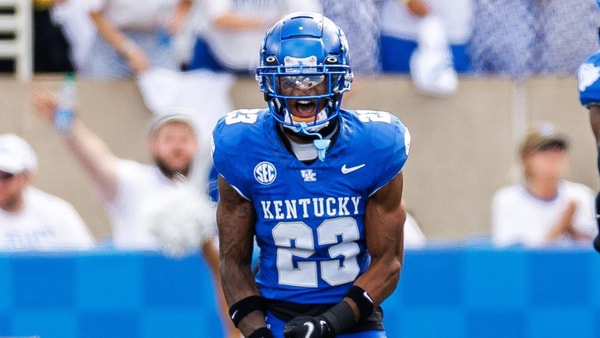
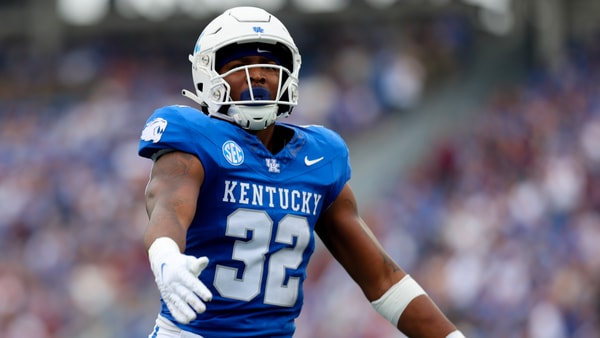
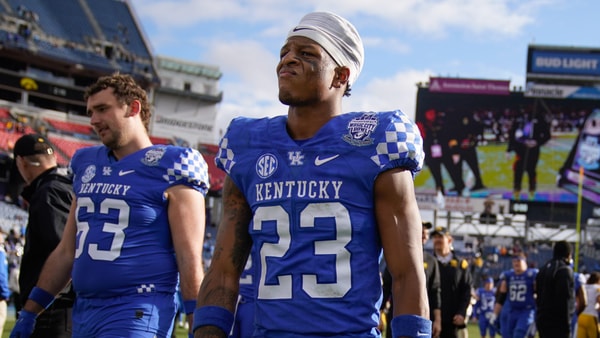
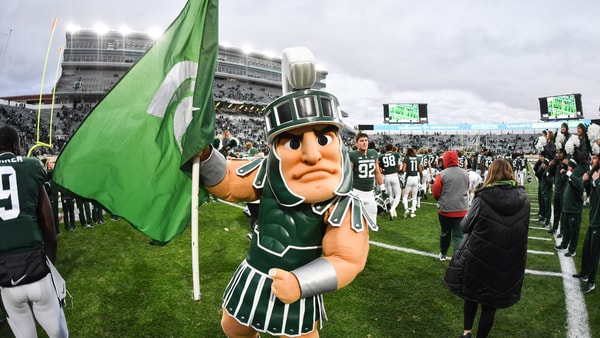

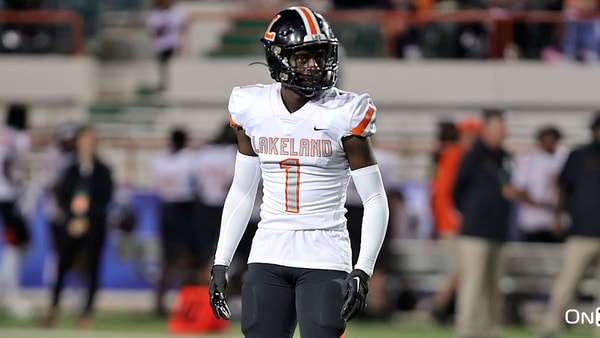
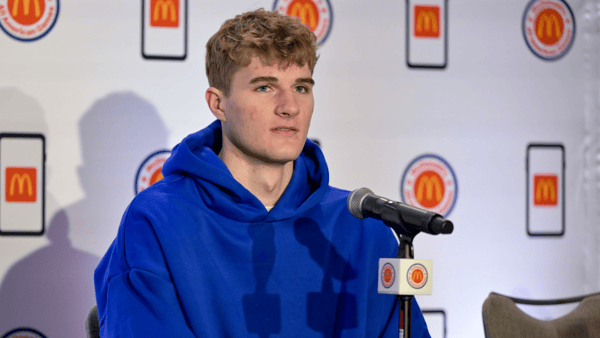
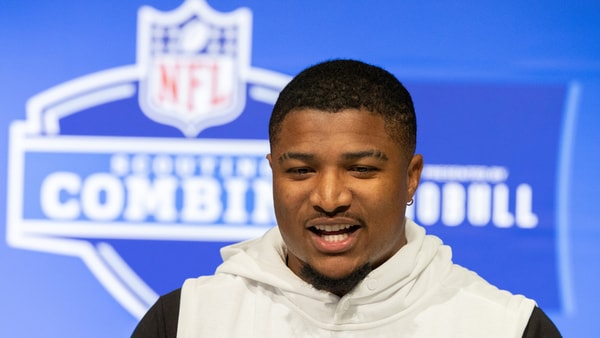
Discuss This Article
Comments have moved.
Join the conversation and talk about this article and all things Kentucky Sports in the new KSR Message Board.
KSBoard